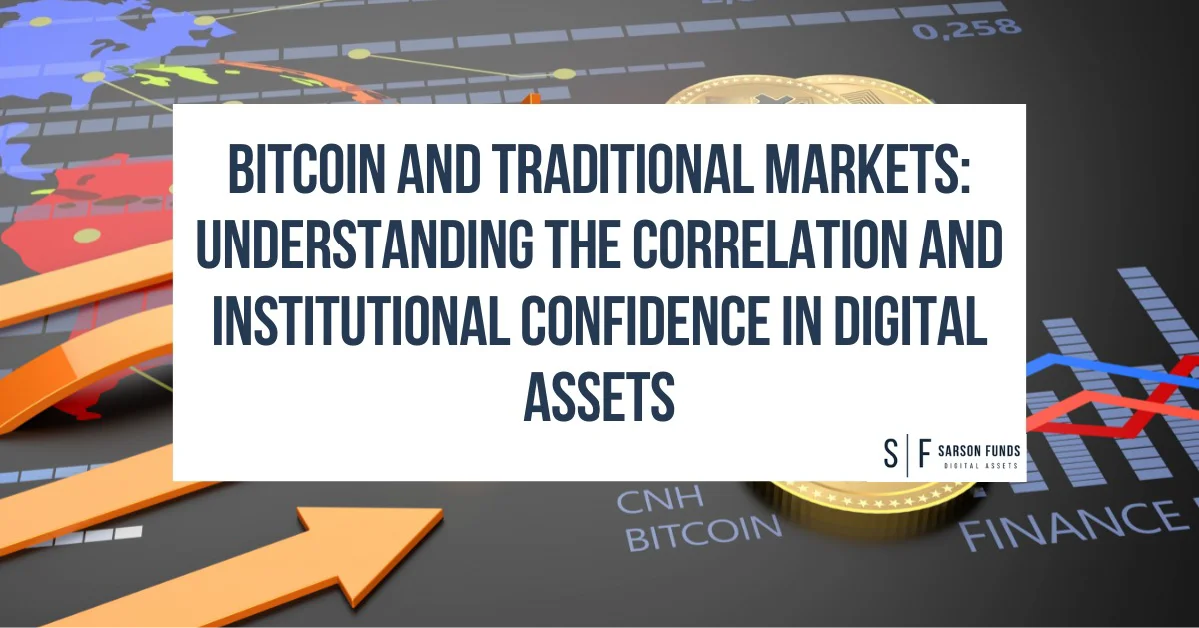
Since its inception, Bitcoin (BTC) has been viewed as an independent, decentralized asset, often described as “digital gold” due to its potential as a store of value. In its early years, BTC had little to no correlation with traditional financial markets, behaving more like an isolated, speculative asset driven by retail demand. However, as institutional investors have gained exposure to Bitcoin and macroeconomic conditions have influenced broader liquidity flows, its relationship with traditional markets—particularly the S&P 500—has evolved. Over time, Bitcoin has increasingly moved in tandem with equities, particularly in risk-on and risk-off market cycles, signaling its integration into mainstream financial portfolios.
This shift in correlation has significant implications for institutional adoption, portfolio diversification, and market confidence in digital assets. However, recent decoupling events—such as the Bybit hack—demonstrate that Bitcoin is still subject to unique crypto-native risks, highlighting both opportunities and challenges for its long-term role in institutional portfolios.
BTC and the S&P 500: The Correlation Story
In traditional finance, correlation is a measure of how closely two assets move in relation to each other. A positive correlation means they tend to move in the same direction, while a negative correlation indicates they move inversely.
Over the past few years, Bitcoin has increasingly exhibited a positive correlation with the S&P 500 and Nasdaq. This correlation peaked during the COVID-19 pandemic, when global liquidity expansion pushed risk assets—including both equities and digital assets—higher. Conversely, during the Federal Reserve’s aggressive rate hikes in 2022-2023, Bitcoin and equities both suffered significant drawdowns, further reinforcing the notion that Bitcoin was behaving more like a risk-on asset.
Why Correlation Matters for Institutional Adoption
For institutional investors, understanding the correlation between Bitcoin and traditional markets is critical for several reasons:
-
- Portfolio Construction & Risk Management
Institutions seek to balance risk and return across their portfolios. A highly correlated Bitcoin means it moves in tandem with equities, allowing institutions to integrate it more seamlessly into traditional portfolio models and risk management strategies. While this reduces its role as an independent hedge, it enhances its predictability and attractiveness as a complementary asset within diversified investment strategies. Conversely, a weak or negative correlation enhances Bitcoin’s appeal as a diversification tool, potentially protecting portfolios from stock market declines. - Macroeconomic Sensitivity & Liquidity Considerations
Bitcoin’s increasing correlation with equities suggests it is becoming more responsive to macroeconomic conditions, including interest rates, inflation, and liquidity cycles. This makes Bitcoin a more predictable asset for institutional investors who rely on macroeconomic models to allocate capital. - Market Maturation & Legitimacy
A consistent, positive correlation with equities can reinforce Bitcoin’s legitimacy as an investable asset. When Bitcoin moves in tandem with the S&P 500, institutions view it as a market-driven asset class rather than a speculative instrument influenced solely by retail hype.
- Portfolio Construction & Risk Management
Recent Decoupling Events: Bybit Hack and Beyond
While Bitcoin’s correlation with equities has increased over time, recent events highlight how crypto-native risks can disrupt this relationship. The recent Bybit hack serves as a key example.
The Bybit Hack and Market Reaction
Bybit, one of the largest crypto exchanges, recently suffered a major security breach, leading to large-scale liquidations and price volatility. Unlike traditional market disruptions, which are often tied to macroeconomic trends, this event was entirely crypto-specific. Institutional investors saw a divergence: while traditional markets remained stable, Bitcoin and other cryptocurrencies saw increased selling pressure.
This event underscores a crucial distinction—while Bitcoin may behave like a traditional asset during macroeconomic shifts, it is still susceptible to industry-specific shocks, including:
-
- Exchange hacks and security breaches
- Regulatory actions against major players (Binance, Coinbase lawsuits)
- Network-level vulnerabilities and technological risks
- Crypto-native liquidity crises (FTX collapse, Terra/Luna meltdown)
These factors introduce idiosyncratic risks that institutions must account for when integrating digital assets into portfolios.
What This Means for Institutional Confidence
The shifting correlation and periodic decoupling of Bitcoin from traditional markets create both opportunities and challenges for institutional investors.
-
- Greater Integration into Traditional Portfolios
Bitcoin’s correlation with equities has made it easier for institutions to model and incorporate into diversified portfolios. As more institutions recognize Bitcoin’s role in risk-adjusted strategies, allocation toward BTC is likely to grow. - Need for Advanced Risk Controls
While correlation with equities boosts confidence, crypto-native risks like exchange hacks and regulatory scrutiny mean institutions must implement robust risk management frameworks. Institutional-grade custody solutions, regulatory compliance, and security measures will be essential for broader adoption. - Long-Term Maturity & Confidence Boost
The ability of Bitcoin to recover from industry-specific crises and maintain a broader market correlation strengthens its legitimacy. If Bitcoin can weather these events without long-term damage, institutions will gain confidence in its resilience, paving the way for deeper market integration.
- Greater Integration into Traditional Portfolios
Conclusion: The Path to Institutional Maturity
Bitcoin’s evolving correlation with the S&P 500 and traditional markets signals its maturation as a legitimate financial asset. For institutional investors, this correlation provides a familiar framework for risk management and allocation. However, periodic decoupling due to crypto-specific risks, such as the Bybit hack, highlights the need for enhanced security and regulatory clarity.
As Bitcoin continues to evolve, institutions and registered investment advisors (RIAs) have an opportunity to shape its role in global finance by approaching digital asset integration with both vigilance and optimism. The key to broader adoption lies in implementing robust risk management strategies while recognizing Bitcoin’s growing correlation with traditional markets as a sign of its maturation. By leveraging secure custody solutions and staying informed on regulatory developments, institutions can mitigate crypto-specific risks while capitalizing on Bitcoin’s potential as a portfolio diversifier. As institutional confidence grows, so too will market liquidity, stability, and mainstream acceptance of digital assets. Those who take a proactive, strategic approach now could be well-positioned to benefit from Bitcoin’s long-term role in an increasingly digital and interconnected financial landscape.
Disclosures: This article is for informational purposes only and should not be considered financial, legal, tax, or investment advice. It provides general information on cryptocurrency without accounting for individual circumstances. Sarson Funds, Inc. does not offer legal, tax, or accounting advice. Readers should consult qualified professionals before making any financial decisions. Cryptocurrency investments are volatile and carry significant risk, including potential loss of principal. Past performance is not indicative of future results. The views expressed are those of the author and do not necessarily reflect those of Sarson Funds, Inc. By using this information, you agree that Sarson Funds, Inc. is not liable for any losses or damages resulting from its use.








